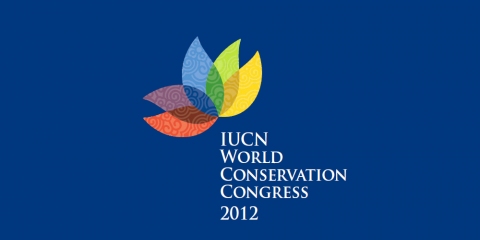Today the main part of the conference got up and running, the theme was Nature+ Climate. In the main auditorium high level dialogues were running throughout the day whilst smaller sessions between 1-6hrs were held in the surrounding conference area. SIANI was present at two of these sessions and you can read my session notes below. It’s a reality of conferences that some events don’t quite live up to your expectations however the events below were informative and entertaining, especially in the panel questions as you can read.
A Global Soil Convention (CEL official session)
Overview: The workshop discussed the preparation of an international environmental law instrument for soil using an ecosystem-based approach for soil relating to food security and soil ecosystem management. The workshop made the case for an international instrument for the sustainable use of soil by introducing the basic elements for an international framework for soil, and the guidelines and approaches for national soil legislation. The speakers discussed the development of an integrated approach to the proposed soil convention. It aimed to incorporate international and national environmental law, the managing of soil ecosystems to improve food security and addressed associated soil and water contamination issues whilst promoting biological diversity conservation and soil carbon sequestration.
Additionally the workshop explored the incorporation of the concept of setting Zero Net Land Degradation (ZNLD) targets, as proposed by the UNCCD Secretariat in 2011, both as the basis for a protocol to the UNCCD as well as an aspect of an international soil convention.
Speaker’s notable points and comments
Luc Gnacadja – Executive Secretary, UNCCD
- Luc gave a very informative and well researched presentation highlighting the wider issues related to soil degradation. He specifically highlights food security, water and energy issues. Soil is the forgotten element in sustainable development.
- 25% land hugely degraded, 26% land moderate degraded and only 10% of land quality is improving (SOLOW – FAO, 2011)
- In 1 year, 12 million/ha drylands are lost (this equals the a land area the size of Benin per year) In terms of soil erosion, 7 billion tonnes of fertile soil is lost per year.
- He appealed for land degradation neutrality (ZNLD). Citing from the Rio+20 ‘The Future We Want’ publication he commented that soil must be managed in all ecosystems. (Paragraphs 205 – 209)
Dr Jonathan Davies – Coordinator Global Drylands Initiative
- Reduction of soil biodiversity leads to a loss of the soils natural resilience to e.g. drought through the loss of soil pores, poor aeration etc.
- Unsustainable farming methods are the cause of soil degradation, increasing populations are the drivers.
- There needs to be a focus on a need for governance and land rights
Ben Boer – Co-chair CEL/WCPA Specialist group on protected areas.
- Soil is a national and international concern and is the very basis of terrestrial biodiversity
- Soil Carbon Sequestration very important
- Cited the ‘ZERO NET LAND DEGRADATION’ publication from the UNCCD
Dr. Ian Hannam – Chair, IUCN Commission on Environmental Law
- Spoke about the need for regional collaboration in developing policy up to global levels. The associated roles and benefits of international instruments at regional level are very complicated. There exist guidelines for drafting national soil degradation document so that countries can pick and mix to develop their own soil conservation specific policy. In central Asia there have been cross-border agreements made for the conservation of soil (Tajikistan and Kirgizstan). A single action plan covers both countries to leverage similar management and administration measures. There is a signed and official agreement in place which could form the basis of a successful international soil policy instrument
Prof. Rob Fowler – Univ. South Australia
- Existing policy framework needs to be broadened to include soil contamination and soil sequestration. Contaminated land has been recognized as a serious problem in developing world over the last 30yrs however these problems now being repeated in developing countries, creating future problems.
- There are many more contaminated sites across the globe than were thought – in China over 10% of arable land contaminated either in soil or water.
- Cited a paper entitled ‘Agriculture and climate change, real problems, false solutions’ as a response to including carbon sequestration and techniques like biochar into the CC mitigation options.
In summary there is a need for a single mechanism for monitoring the sustainable use of Soil. A convention on sustainable soils would fill a gap in environmental law; it would promote conservation legislation in
The ZNLD is a good start – but soils suffer from such a big image problem that it will never get on the agenda. We need to start to brand soil in a ‘Nexus+’ type approach.
